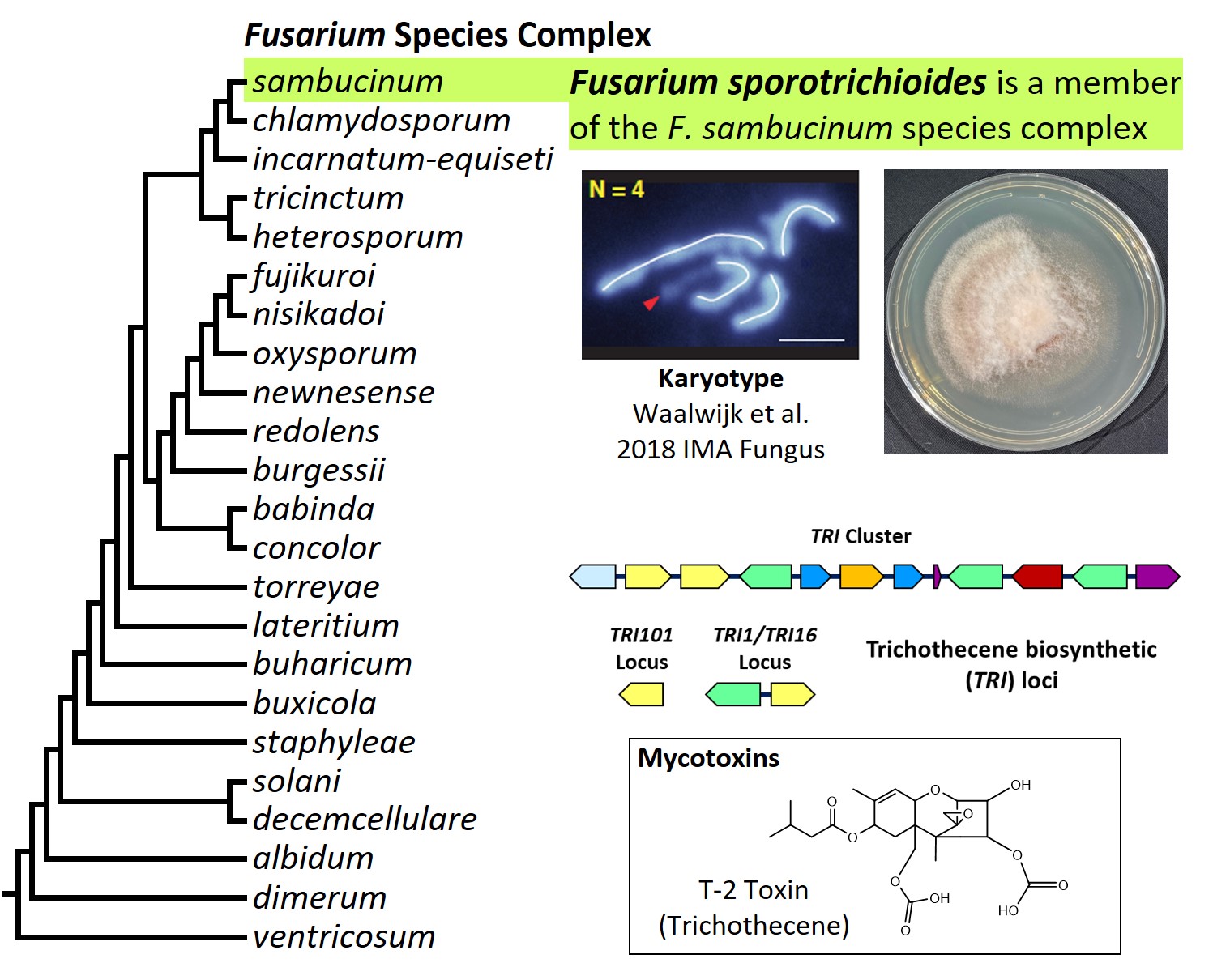
Image Credit: Robert Proctor, Amy McGovern and Crystal Probyn.
Fusarium sporotrichioides NRRL 3299
Fusarium (family Nectriaceae) is a species-rich fungal
genus that poses a dual threat to agriculture because many species
cause destructive crop diseases and/or contaminate infected crops
with toxic secondary metabolites (mycotoxins) that are health
hazards to humans and other animals. Some Fusarium species
are pathogens of energy crops such as corn and sugar cane, and
Fusarium mycotoxins are frequent contaminants of dried
distillers’ grains, coproducts of grain-based ethanol
production used as a protein-rich livestock feed. Some
Fusarium species can also exist as endophytes in plants,
including some bioenergy crops.
DNA-based phylogenetic analyses have resolved Fusarium into 23 multi-species lineages referred to as species complexes (Geiser et al. 2021). Fusarium sporotrichioides is a member of the Fusarium sambucinum species complex, which is comprised of over 70 phylogenetically distinct species (Laraba et al. 2021). Multiple species in this complex cause Fusarium head blight (FHB), one of the most important cereal diseases worldwide. During its evolutionary diversification, Fusarium has undergone multiple chromosomal fusions and, as a result, members of early diverging species complexes tend to have more chromosomes (15 – 20) than later diverging complexes (4 – 7). Members of the F. sambucinum complex tend to have 4 – 7 chromosomes; F. sporotrichioides has 5 – 7. Within the F. sambucinum species complex, F. sporotrichioides is a member of a clade of closely related species that includes F. armeniacum and F. langsethiae, and that occur on cereal crops and wild grasses. Most members of this clade produce T-2 toxin and diacetoxyscirpenol, trichothecene mycotoxins associated with the diseases alimentary toxic aleukia in humans and moldy corn toxicosis in some livestock species. Fusarium sporotrichioides strain NRRL 3299 was isolated from maize in France and has served as a model to elucidate the molecular genetics and biochemistry of trichothecene biosynthesis. Although the strain typically produces high levels of T-2 toxin, individual cultures of the strain can lose their ability to produce the toxin. Cultures of the fungus can also undergo morphological sectoring. But such sectoring is not always associated with changes in T-2 toxin production.
References:
- Geiser DM, Al-Hatmi A, Aoki et al. 2021. Phylogenomic analysis of a 55.1 kb 19-gene dataset resolves a monophyletic Fusarium that includes the Fusarium solani Species Complex. Phytopathology 111: 1064-1079.
- Laraba I, McCormick SP, Vaughan MM, et al. 2021. Phylogenetic diversity, trichothecene potential, and pathogenicity within Fusarium sambucinum species complex. PLoS One 16:e0245037.
